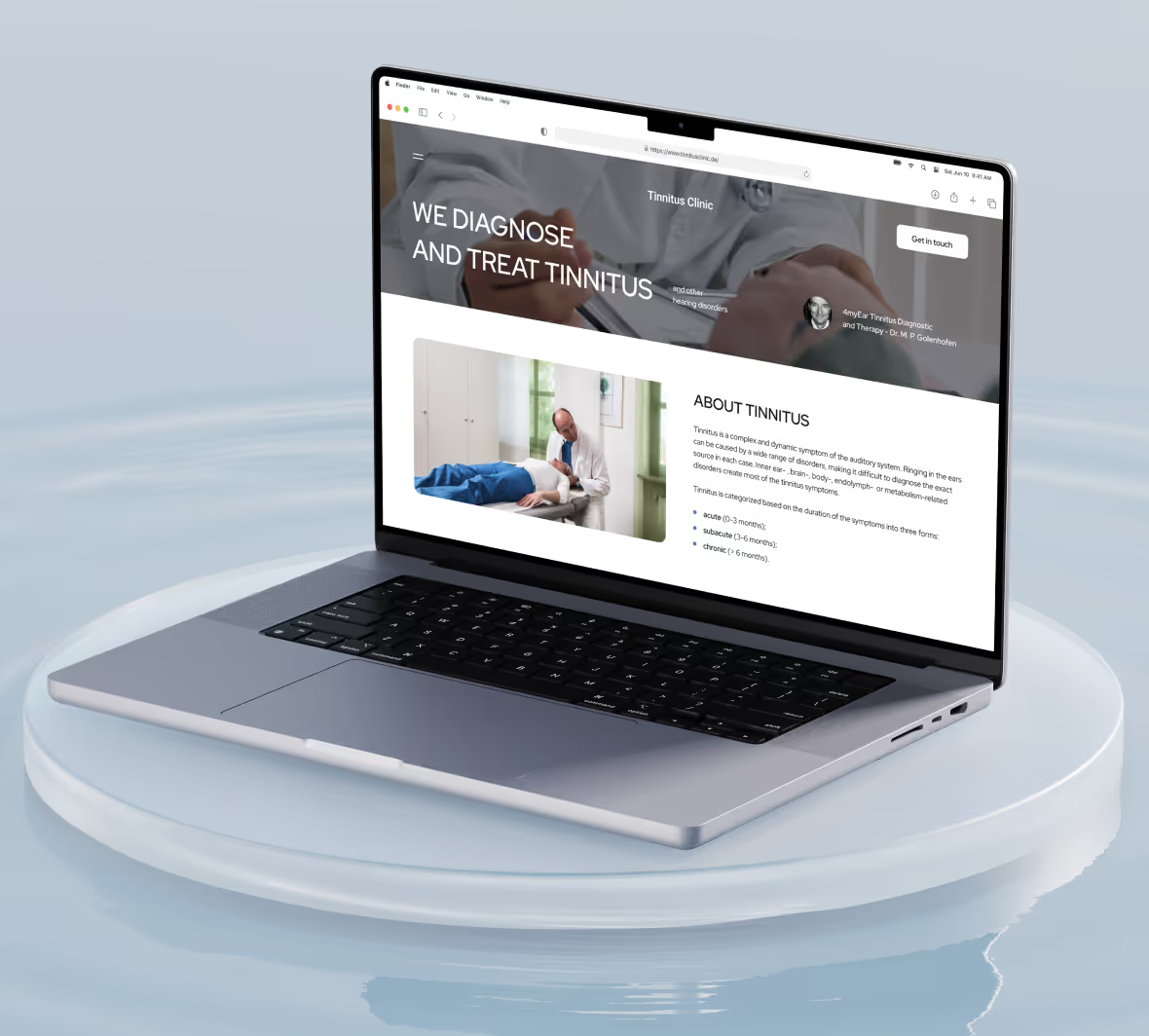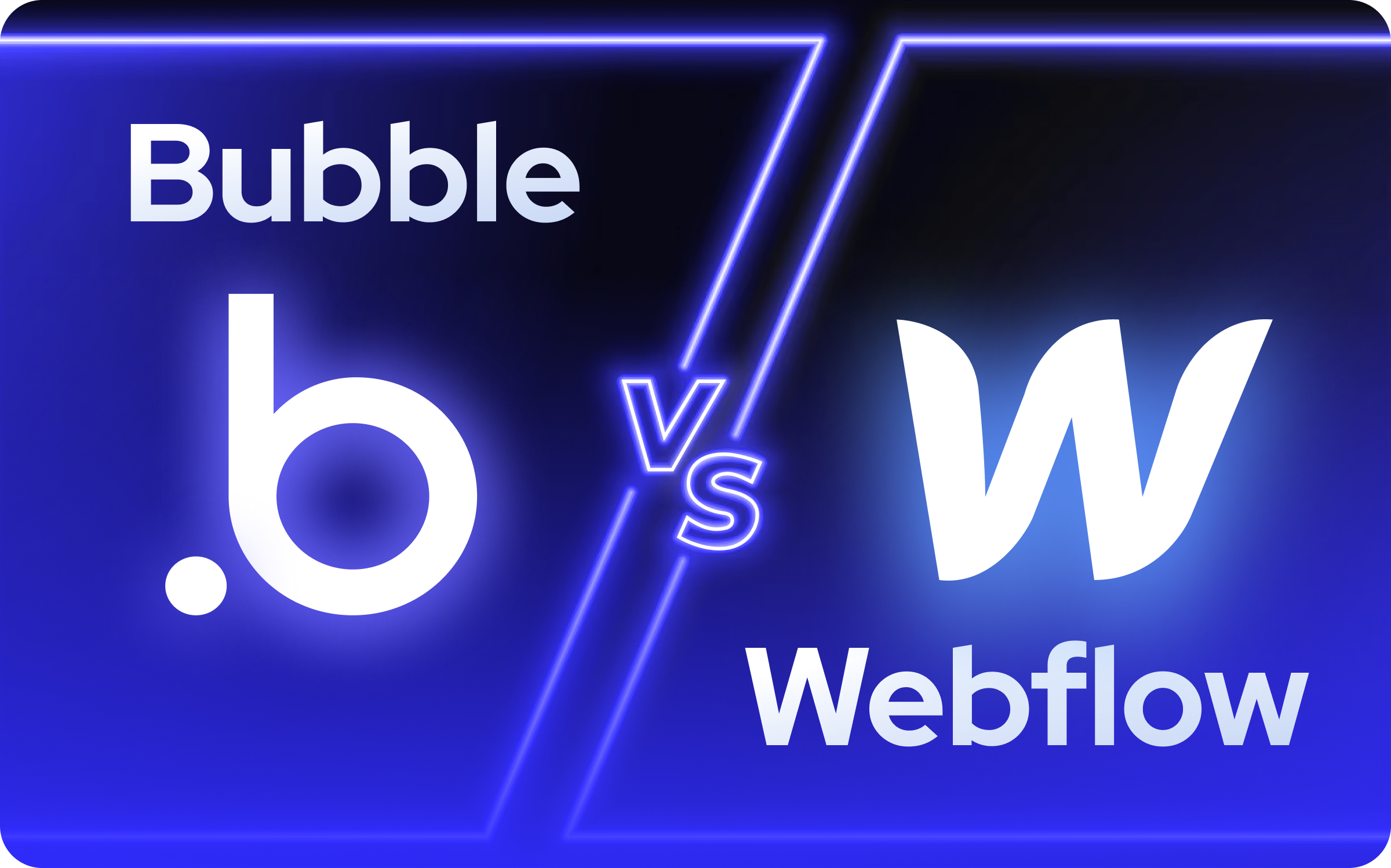
Consider you’ve just launched your product. The first users are signing up, and you breathe a sigh of relief. But shortly after, you discover that your product has a significant flaw. Your users hate it, and your product now faces a high risk of failure. What a nightmare. Product risk management can help you identify and address issues like this early on to reduce the chances of failure. In this guide, you'll learn all about product risk management, starting with the basics, like what a POC is in software.
No code MVP is a valuable tool for product risk management. It allows you to create a product prototype quickly without writing any code. This means you can identify and address potential product issues before investing in development.
What Is Product Risk Management
Product Risk Management is a systematic approach to identifying, assessing, and addressing potential risks impacting a product throughout its lifecycle. From the concept and design phase to manufacturing, distribution, and market launch, risk management ensures that all aspects of a product are monitored and controlled to minimize potential issues that could harm the product’s performance, compliance, or reputation.

Critical Elements of Product Risk Management
Risk Identification
This first step involves recognizing all potential threats related to the product. Risks may stem from internal sources, such as design flaws, manufacturing errors, or logistical challenges, or external factors, including market shifts, regulatory changes, and supply chain disruptions. Identifying risks early helps establish a proactive foundation for management.
Risk Assessment
Once identified, each risk is evaluated based on its likelihood and potential impact. Tools like risk matrices can rank risks, allowing teams to focus on those that are both highly likely and potentially harmful. This assessment is crucial for prioritizing resources and determining where preventive or corrective actions are needed most urgently.
Risk Mitigation
After assessing risks, mitigation strategies are developed and implemented. Depending on the nature of the risk, mitigation might involve design, material sourcing, production process, or even marketing approach adjustments. By taking these steps, companies can reduce the probability of the risk occurring or lessen its impact should it arise.
Monitoring and Control
Effective risk management is an ongoing process. Continuous monitoring helps detect emerging issues that may require intervention. This stage involves regular product testing, feedback collection, performance analysis, and compliance checks to align the product with quality and safety standards.
Why Product Risk Management Matters
Risk management in product development offers substantial benefits that contribute to both short- and long-term success:
Ensures Quality
A thorough approach to risk management minimizes defects, helping to maintain consistent quality and reliability, which is crucial for customer satisfaction and loyalty.
Meets Regulatory Standards
By staying proactive with compliance, companies avoid penalties and ensure that their products meet all required industry standards, which is especially important in sectors like healthcare, automotive, and consumer goods.
Reduces Costs
Preventing problems before they occur saves both time and money. Risk management reduces the need for costly recalls, reengineering, or extensive customer support.
Enhances Brand Reputation
A product consistently meeting quality standards and performing as expected builds customer trust. Effective risk management demonstrates reliability, contributing to a strong brand reputation.
Boosts Customer Satisfaction
Issue-free products lead to a positive customer experience. When customers feel assured of a product’s quality and safety, they are likelier to remain loyal and recommend the brand to others.
Related Reading
• Collect Customer Feedback
• MVP Features
• Develop MVP
• MVP Development Cost
• How to Build an MVP
• How to Determine Market Demand
• How to Launch a Startup
• How to Validate Your Business Idea
• MVP Benefits
• MVP Development for Startups

5 Best Product Risk Management Practices
1. Create a Risk Assessment Framework to Identify and Analyze Product Risks
A structured framework is essential for systematically identifying and analyzing risks. The process should begin early in the product lifecycle, even during the initial concept phase, and continue throughout the development, production, and post-launch stages.
Risk Identification Tools
Utilize tools like SWOT analysis (Strengths, Weaknesses, Opportunities, Threats), Fishbone Diagrams, and Fault Tree Analysis to assess all potential risks thoroughly. These tools allow teams to identify evident and obscure risks, ranging from operational issues to external environmental changes.
Quantitative & Qualitative Assessment
Combining quantitative (statistical and data-driven) and qualitative (subjective judgment and expert input) approaches helps assess the severity and likelihood of identified risks. For example, scoring risks based on their probability and impact allows teams to prioritize and focus on the highest risks.
Cross-Functional Collaboration
Involve teams from different functions, such as design, engineering, marketing, legal, and finance, to cover all potential risk factors. Each department may have unique insights into the possible issues that could arise in its area of expertise.
A comprehensive risk assessment framework enables businesses to look at product risks from multiple perspectives and avoid oversights, especially in the early stages of development.
2. Integrate Risk Management into Product Design and Development
Integrating risk management directly into the product design and development process reduces the likelihood of issues. By taking a proactive stance, companies can design products with risk mitigation strategies in place from the start.
Design for Safety & Durability
Products should be designed for safety, durability, and ease of use. Robust design principles such as redundancy (backups for critical components) and fail-safes can minimize the risk of failure.
Fail-Mode Effects Analysis (FMEA)
This technique helps identify potential failure modes within a product and the causes of those failures. It is commonly used to predict and prevent manufacturing processes and product functionality issues.
Prototyping & Testing
Thorough prototyping and testing at various stages—such as functional testing, stress testing, and user acceptance testing—ensure that the product will perform as expected under various conditions. This early-stage validation identifies problems before they become costly failures in production or after-market scenarios.
By designing risk into the product development process, businesses increase the chance of identifying issues before the product reaches customers, helping to avoid costly recalls or damage to the brand's reputation.
3. Build a Robust Supply Chain Risk Management System
For many businesses, the supply chain is a critical part of the product lifecycle, and any disruptions can lead to significant risks, from supplier failure, delays, or issues with the raw materials used in manufacturing.
Supplier Selection & Evaluation
Carefully choose suppliers who align with your risk tolerance and quality standards. Evaluate potential suppliers based on their track record, financial stability, regulation compliance, and risk management practices.
Supply Chain Transparency
Maintaining visibility and real-time tracking across the supply chain helps detect potential issues early. Employ technologies like blockchain for better traceability or use inventory management systems to track production progress and flag delays.
Diversification & Contingency Planning
Relying on a single supplier or sourcing strategy can expose your business to substantial risk if something goes wrong. By diversifying suppliers and manufacturing locations, you mitigate the impact of a single point of failure. Additionally, contingency plans, such as backup suppliers or alternative raw materials, ensure you can act quickly during a disruption.
Ensuring that risk management extends to the supply chain ensures that a product can be delivered to market as promised, avoiding costly delays or quality issues due to supplier failure.
4. Monitor Compliance and Regulatory Changes
Compliance and adherence to regulations are integral to managing product risks, especially in industries like healthcare, automotive, food and beverage, and consumer electronics, where product safety and standards are heavily regulated.
Regular Audits and Reviews
Conduct regular compliance checks and audits to ensure the product complies with local and international regulations. This includes verifying safety certifications, environmental regulations, labor practices, and other industry-specific standards.
Adapt to Changing Regulations
Laws and regulations evolve, and businesses need to be agile in adapting to these changes. Monitoring regulatory bodies and staying informed about shifts in compliance requirements can prevent legal risks and avoid penalties or product recalls.
Third-Party Testing & Certification
Using third-party labs or auditors to test product compliance and quality is essential, particularly when launching new markets. Third-party certifications build trust with consumers and regulatory agencies, ensuring that the product meets or exceeds safety and quality standards.
Staying on top of regulatory changes helps mitigate non-compliance risks, which can result in costly fines and lost brand credibility.
5. Implement Post-Launch Monitoring and Continuous Improvement
Risk management doesn’t end when the product hits the market. Continuous monitoring is crucial to catching issues early and making necessary real-time adjustments.
Customer Feedback Channels
Creating effective ways to collect and analyze customer feedback—whether through surveys, reviews, or direct communication—helps identify potential issues with the product that were not discovered during testing.
Product Performance Metrics
Utilize analytics tools to monitor product performance post-launch. Metrics like defect rates, return rates, and customer complaints are valuable indicators that something may be wrong with the product or its supply chain.
Iterative Improvements
Risk management should be a continuous cycle. Use data gathered during the product’s lifecycle to make iterative design, functionality, or customer service process improvements. Regularly revisiting the product and its performance can help avoid long-term risks and improve overall product quality.
By establishing ongoing product monitoring and feedback collection mechanisms, companies ensure they can quickly respond to emerging risks and improve products based on real-world performance.
These best practices in product risk management help businesses mitigate risks proactively, ensuring that they launch successful, high-quality products that meet customer expectations while minimizing the impact of any issues that arise. Bring your long-held business ideas to life with us, and get a free product discovery & scoping for your app idea today!

Common Product Risk Types and How to Mitigate Them
Technical Risks: The Product Development Quagmire
Technical risks are those associated with a product's functionality, performance, or design. These risks can emerge due to flaws in the engineering process, incorrect assumptions, poor design choices, or failure to meet technological standards. Examples include malfunctioning hardware or software bugs, failure of the product to meet performance expectations or regulatory standards, and design flaws that affect the user experience or safety.
How to Mitigate Them
- Thorough Testing and Validation Implement rigorous testing protocols, such as prototype testing, stress testing, and user acceptance testing (UAT). Identifying bugs and performance issues early allows for quick fixes before the product is mass-produced or launched.
- Cross-Disciplinary Review: Bring engineers, designers, and quality assurance (QA) teams early in the development cycle to ensure technical specifications align with product goals.
- Continuous Improvement: Continue monitoring product performance and iterating based on feedback even after launch. Regular software updates, patches, or hardware modifications can resolve technical issues arising after the product is deployed.
Technical risks are inherent in all product development but can be mitigated with good design practices, testing, and proactive issue resolution.
Market Risks: When Products Face the Wrong Crowd
Market risks arise when there is uncertainty regarding the demand for a product or the competitive environment in which it will be launched. This type of risk can result from changing market conditions, consumer behavior shifts, or competitors' actions. Examples include products that fail to meet consumer expectations or evolving preferences, overestimating demand or the market’s readiness for a new product, and competitive pressure causing the product to become obsolete or underperform.
How to Mitigate Them
- Market Research: Conduct thorough market research before launching a product to understand your target audience, their preferences, and what they are willing to pay. Use tools like surveys, focus groups, and competitor analysis to gather insights into market needs.
- Pilot Programs or Soft Launches: Test your product in a small, controlled environment (such as a limited market or customer segment) before fully launching. This allows you to gauge interest, identify unexpected issues, and adjust accordingly.
- Agile Strategy: Adopt an agile approach that allows you to adapt and pivot based on real-time feedback and market conditions. Be prepared to adjust features, pricing, or positioning if market conditions change.
Companies can reduce the likelihood of market risks affecting product success by carefully researching and responding to market conditions and customer needs.
Financial Risks: Counting the Cost of Product Development
Financial risks refer to the uncertainty surrounding the costs involved in product development, manufacturing, marketing, and distribution and the potential returns from the product once it hits the market. Poor financial planning or unexpected costs can derail a product's profitability. Examples include unforeseen production costs that eat into margins, higher-than-expected marketing or distribution expenses, and products that fail to meet revenue targets or become a financial drain on the business.
How to Mitigate Them
- Budget Planning and Forecasting: Create a detailed budget for the entire product lifecycle, from development to post-launch, and account for all foreseeable expenses. Use conservative estimates for costs and revenues to ensure you have room to absorb unexpected financial shocks.
- Cost Control: Regularly monitor expenses against the projected budget. Implement cost-cutting strategies without compromising product quality, such as negotiating better supplier contracts or optimizing the supply chain.
- Break-even Analysis: Calculate the break-even point to determine how many units must be sold to cover costs. This analysis helps you understand your financial thresholds and avoid investing too much into a product that may not be financially viable.
Sound financial planning and vigilance throughout the product lifecycle can prevent most financial risks from impacting profitability.
Operational Risks: When Your Product Can’t Get to Market
Operational risks pertain to the internal processes that produce, deliver, and distribute a product. These risks involve disruptions or inefficiencies in the supply chain or manufacturing processes or the inability to scale operations to meet demand. Examples include delays in sourcing raw materials, production line issues or failures that lead to delays or product defects, and distribution problems that result in stockouts or logistical nightmares.
How to Mitigate Them
- Robust Supply Chain Management: Maintain strong relationships with multiple suppliers to avoid overreliance on any single source. Real-time tracking and inventory management systems should also be used to gain complete visibility into the supply chain and react quickly to disruptions.
- Backup Plans: Develop contingency plans for various operational challenges. Have a list of backup suppliers, alternative production strategies, or storage solutions to keep the product’s manufacturing and distribution on track.
- Supplier Audits: Regularly assess your suppliers' capabilities and performance to ensure they meet your operational needs. Monitor their financial health and operational stability to prevent surprises.
Operational risk mitigation ensures smooth internal processes and reliable external partners, allowing the product to move through its lifecycle without costly hiccups.
Reputational Risks: When Products Go Bad
Reputational risks arise when a product fails to meet expectations, negatively impacting a company’s brand image. Social media and public reviews often amplify this risk, where negative feedback spreads quickly and affects consumer perception. Examples include a product recall due to safety issues, leading to a loss of consumer trust; poor customer service experiences that cause dissatisfaction; and negative online reviews or social media backlash.
How to Mitigate Them
- Quality Control & Testing: Before it hits the market, ensure every product meets your company’s quality standards. A strong focus on quality control and robust testing can prevent many reputational risks.
- Responsive Customer Service: Implement a strong customer service strategy to handle complaints, returns, and concerns promptly. Providing a quick and effective solution to issues can help repair trust and prevent negative feedback from escalating.
- Transparent Communication: In case of issues, be transparent with customers and proactively communicate about any delays, product issues, or recalls. Honesty can help minimize damage to your reputation and maintain customer loyalty.
Managing reputational risks requires a commitment to quality, customer care, and open communication. By building a reputation for trustworthiness, companies can reduce the impact of potential adverse events.
By recognizing and addressing these standard product risk types early in the development process, businesses can create more resilient products that are less susceptible to failure. Effective mitigation strategies for each type of risk help ensure a smoother product lifecycle and better outcomes.
Get a Free Product Discovery & Scoping for Your App Idea Today
We are a no-code development agency tailored for non-technical entrepreneurs looking to launch B2B SaaS or service web apps quickly. Our expertise lies in using tools like Bubble.io, Xano.com, and Webflow to deliver MVPs within a month. We offer rapid development speed, cost-effectiveness compared to traditional methods, scalable and secure solutions, and full-service support from design to post-launch. We're ideal for founders who've experienced lengthy traditional development cycles or need a technical co-founder.
Our approach solves common pain points like needing more tech skills, no-code scalability, security concerns, and the desire to focus on business while we handle the tech. With Minimum Code, you can finally bring your long-held business idea to life quickly and efficiently without breaking the bank. Bring your long-held business ideas to life with us, and get a free product discovery & scoping for your app idea today!

Product Risk Assessment Tools and Techniques
Get Ahead of Product Risk With a Risk Matrix
A Risk Matrix is a visual tool for evaluating and prioritizing risks based on their probability of occurrence and severity of impact. The matrix categorizes risks into different levels (e.g., low, medium, high) to help stakeholders understand the significance of each risk.
How It Works
- Probability: The likelihood that a risk event will occur.
- Impact: The potential severity or consequences if the risk occurs.
- Risk Categories: The matrix typically uses a grid with probability on one axis (e.g., unlikely, possible, likely) and impact on the other (e.g., minor, moderate, severe).
- Prioritization: Risks are assigned to a grid based on their probability and impact, with high probability and high-impact risks receiving the highest priority.
Benefits
- Provides a clear, visual overview of risks.
- Allows teams to focus on the most significant risks first.
- Helps prioritize resources for risk mitigation efforts.
Example
Imagine that a software product is being developed. A potential risk could be a bug that affects the user interface. If the bug is highly likely but only causes a minor inconvenience, it would be placed in the low-impact, high-probability section. However, a bug that causes crashes would be categorized as high-impact, high-probability, requiring immediate attention.
Assess Potential Product Failures With FMEA
Failure Mode and Effects Analysis (FMEA) is a systematic method for evaluating potential failure modes in a product’s design, manufacturing process, or system operation and determining their impact on the overall product.
How It Works
- Identify Failure Modes: List all the potential ways each component or process could fail.
- Determine Effects: For each failure mode, assess the potential consequences for the product, users, and business.
- Assess Likelihood and Severity: Rate the likelihood and severity of each failure using numerical scales.
- Risk Priority Number (RPN): Multiply the likelihood, severity, and detection ratings for each failure mode to get the Risk Priority Number. The higher the RPN, the greater the risk.
Benefits
- It helps identify the most critical product vulnerabilities.
- Focuses on addressing the root causes of potential failures.
- Supports proactive risk management by focusing on failure prevention rather than reaction.
Example
FMEA might identify a failure mode in a car's braking system, such as a malfunctioning brake sensor. The potential effects could range from minor inconvenience (false alerts) to severe consequences (failure to stop in emergencies). The team would prioritize addressing this failure mode based on its potential impact on safety.
Navigate Risks in Complex Systems With HAZOP
A Hazard and Operability Study (HAZOP) is a structured and systematic approach for identifying hazards in a product or system by analyzing deviations from the intended design or operation. It’s primarily used in industries like manufacturing and chemical processing but can be adapted for other product development processes.
How It Works
- Identify Nodes: Break down the product into critical components (e.g., subassemblies, processes, stages).
- Study Deviations: Use brainstorming techniques to consider how deviations from the intended operation could lead to potential hazards or failures.
- Evaluate Consequences: For each identified hazard, evaluate its impact on safety, quality, or other areas.
- Develop Solutions: Determine actions or design changes needed to eliminate or control hazards.
Benefits
- Provides in-depth analysis of potential hazards in complex systems.
- Promotes teamwork and creativity in identifying possible risks.
- Addressing hazards early helps create a safer, more reliable product design.
Example
A HAZOP study might reveal that a consumer electronics product's circuit board overheating due to faulty wiring could cause a fire hazard. The team could then modify the design to use heat-resistant materials and add an automatic shutoff feature.
Track Product Risks With a Risk Register
A Risk Register is a document or tool that tracks and monitors risks throughout product development. It includes details about each identified risk, its potential impact, and its actions to mitigate or manage it.
How It Works
- Risk Identification: List all risks identified during risk assessments or brainstorming sessions.
- Risk Analysis: Assign values to each risk regarding likelihood, impact, and priority.
- Mitigation Plan: Outline actions to reduce or eliminate each risk.
- Status Updates: Monitor the status of risk mitigation efforts and update the register regularly to track progress.
Benefits
- Keeps all risk information organized and easily accessible.
- Serves as a communication tool for risk management among team members.
- Helps track ongoing mitigation efforts and ensure accountability.
Example
For a new app development project, the risk register might list risks such as technical bugs, data security issues, or development delays. Each risk would have an assigned mitigation responsibility, such as a developer handling bug fixes or a cybersecurity expert addressing security protocols.
Assess Product Success Factors With a SWOT Analysis
SWOT Analysis is a strategic planning tool for evaluating the internal and external factors that could impact a product’s success. It helps identify not only risks but also opportunities for growth or improvement.
How It Works
- Strengths: Assess the product's internal advantages or capabilities (e.g., unique features, strong team).
- Weaknesses: Identify internal limitations or vulnerabilities (e.g., outdated technology, lack of user feedback).
- Opportunities: Look for external factors that can be leveraged for success (e.g., market trends, new technology).
- Threats: Evaluate external challenges impacting product success (e.g., competition, changing regulations).
Benefits
- Offers a comprehensive view of both risks and opportunities.
- It helps companies balance potential rewards with challenges.
- Encourages proactive strategy development for growth.
Example
When launching a new fitness tracker, a SWOT analysis might reveal an opportunity in the growing health-conscious market but also a threat in the form of intense competition from established brands like Fitbit. It would help the team address the risk of competition while capitalizing on the opportunity for innovation.
Related Reading
• MVP Testing Methods
• MVP in Scrum
• MVP App Development
• Types of MVPs
• Lean Startup Validated Learning
• MVP in Agile
• Minimum Viable Product vs Prototype
• Minimum Viable Product Examples
Get a Free Product Discovery & Scoping for Your App Idea Today
Product risk management involves identifying, assessing, and mitigating the risks associated with a product throughout its lifecycle. Managing product-related risks helps businesses reduce the chances of failure and avoid costly mistakes. For example, a mobile app might have technical risks (such as performance issues and bugs), market risks (such as creating a product no one wants), and financial risks (such as going over budget). These risks can jeopardize the app's success and should be addressed before the product is launched and even after it’s on the market.
Our approach solves common pain points like needing more tech skills, no-code scalability, security concerns, and the desire to focus on business while we handle the tech. With Minimum Code, you can finally bring your long-held business idea to life quickly and efficiently without breaking the bank. Bring your long-held business ideas to life with us, and get a free product discovery & scoping for your app idea today!

Ready to build your product?






.avif)

.png)
